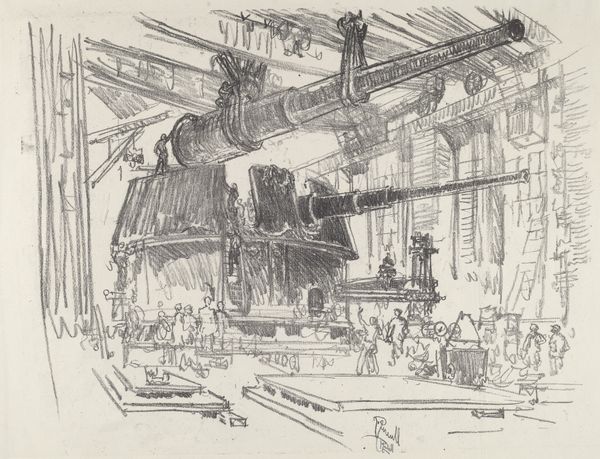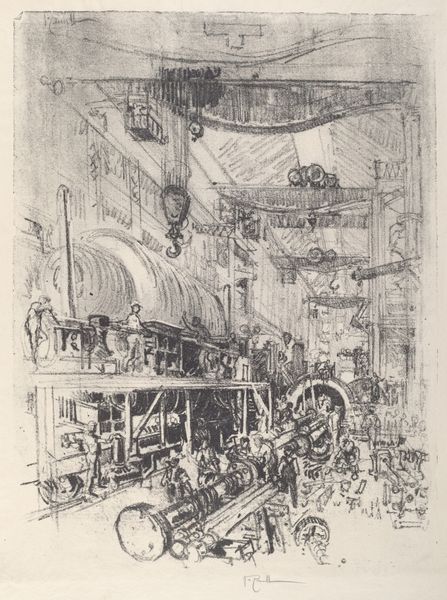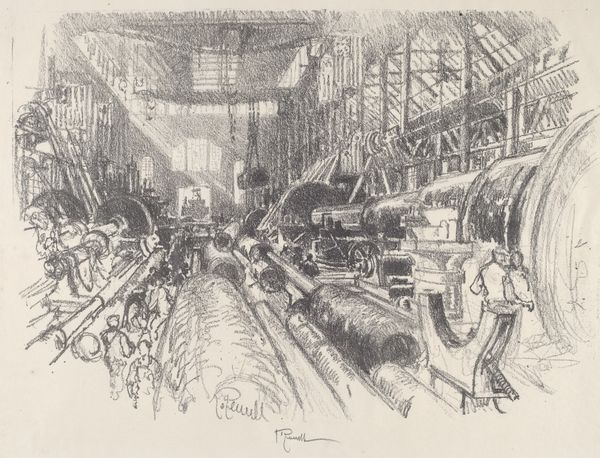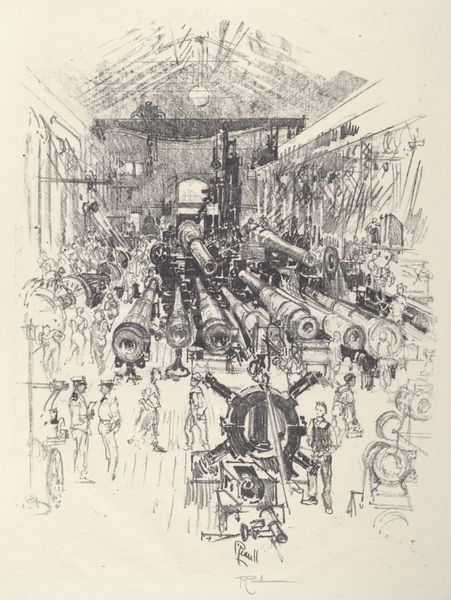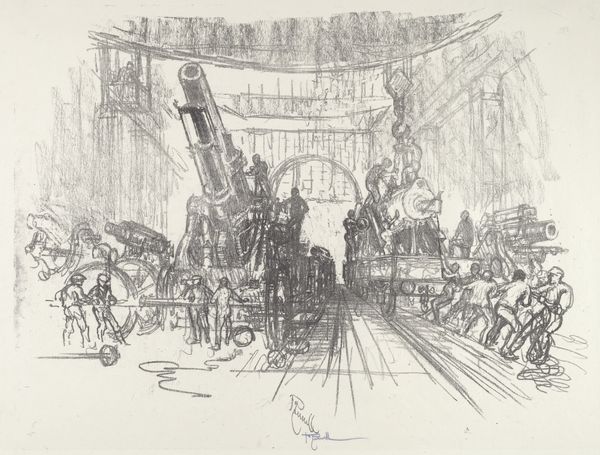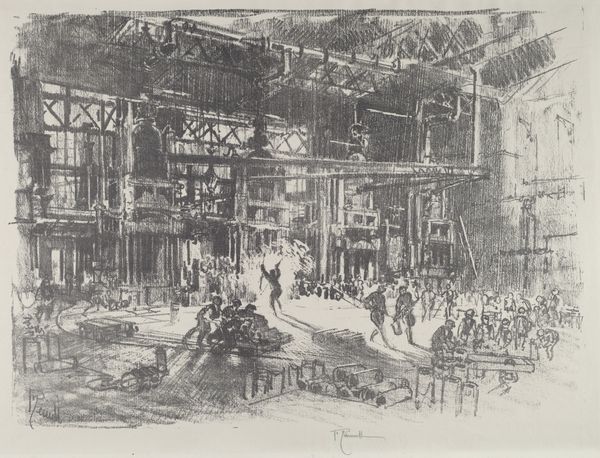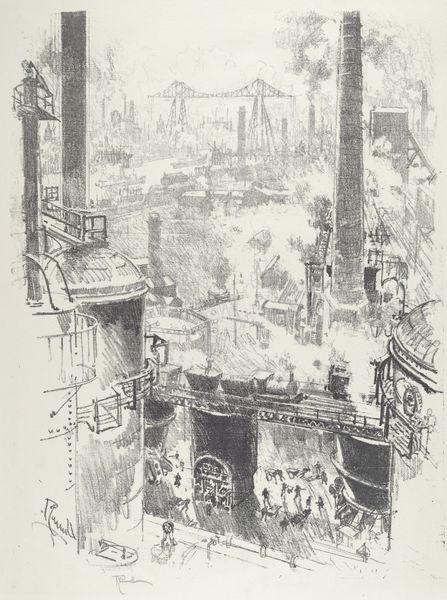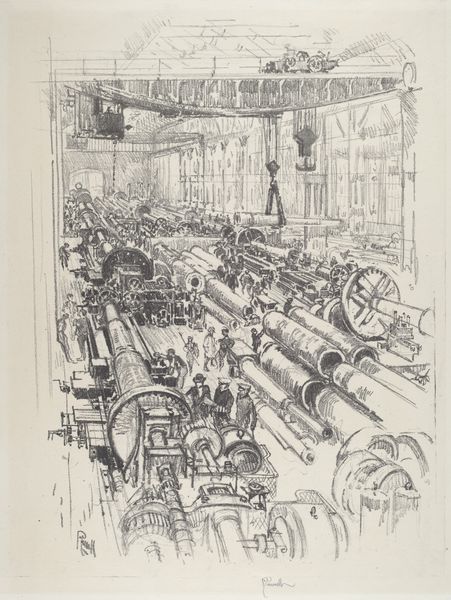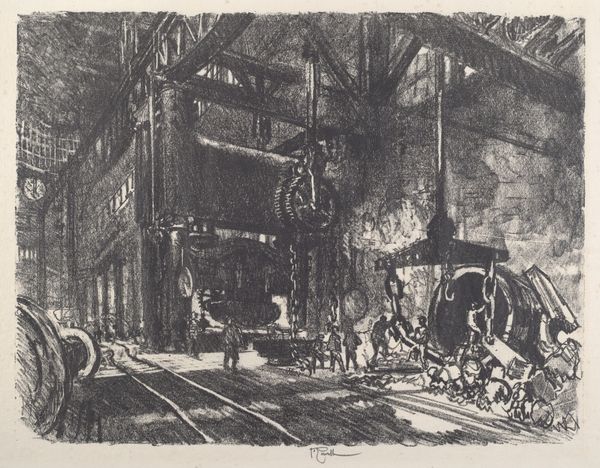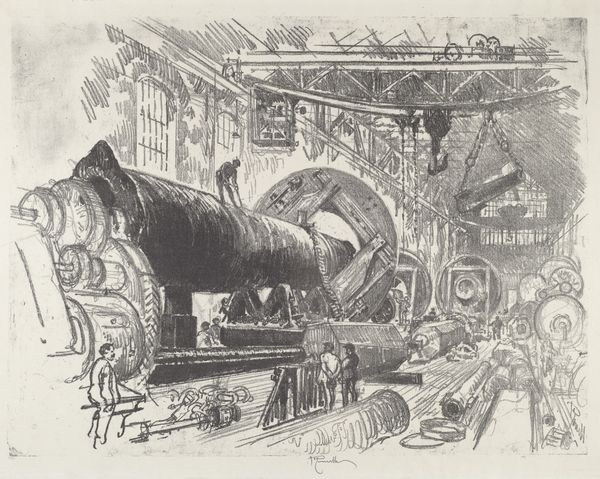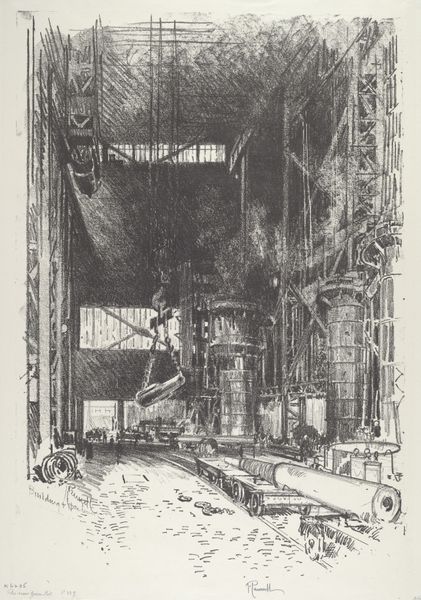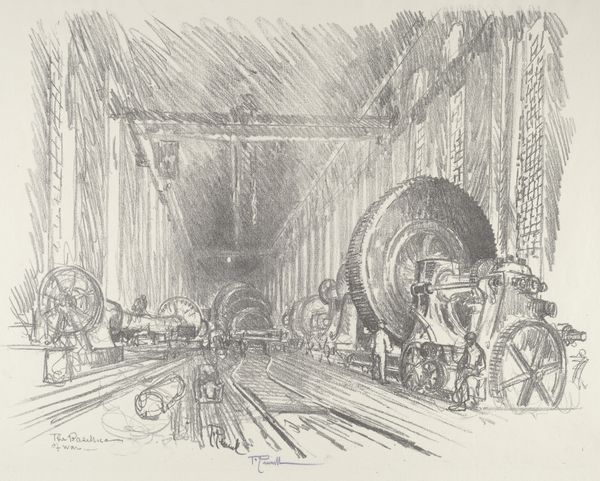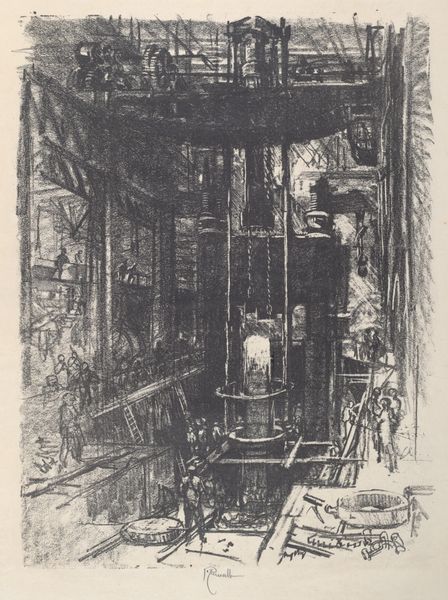
drawing, print, pencil, graphite
#
drawing
#
ink drawing
# print
#
pencil sketch
#
linework heavy
#
pencil
#
ashcan-school
#
line
#
graphite
#
realism
Copyright: National Gallery of Art: CC0 1.0
Editor: This is Joseph Pennell's 1917 graphite drawing, "The Little Men of the Big Hammer." It feels almost dystopian, this enormous, looming machine dwarfing all the figures around it. What do you see in this piece from an art historical perspective? Curator: What strikes me first is the interplay of line and mass. Observe how Pennell uses delicate lines to create depth and atmosphere around the brutal form of the hammer. This stark contrast invites us to consider the relationship between industrial power and the human figure. Note the verticality of the composition; the thrusting force and the contrast to these "little men." How does the interplay between delicate rendering and coarse drawing contribute to the reading? Editor: It’s true; the linework is incredibly varied, almost vibrating in places. It gives a real sense of movement and the sheer force of the machine. Do you think there is a certain type of philosophy at play here? Curator: Consider this from a structuralist viewpoint. The "big hammer" represents brute force and progress while these 'little men' represent an insignificance and subjugation. It's almost like a symbolist manifesto rendered through industrial subject matter. The composition, thus, posits a distinct hierarchy, the tool a dominant presence, man, a necessary one but merely a resource for operation. The texture provides an incredible sense of immediacy. What implications does the medium suggest in its overall statement? Editor: The graphite itself feels quite immediate, almost like a snapshot. I can see how that raw quality contributes to this powerful, almost unsettling statement about man and machine. It’s definitely given me a lot to think about regarding power dynamics represented formally in art. Curator: Indeed. Pennell has given us a powerful case study of force through masterful manipulation of texture, value, and perspective. The image remains provocative even today.
Comments
No comments
Be the first to comment and join the conversation on the ultimate creative platform.
